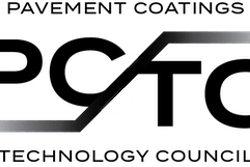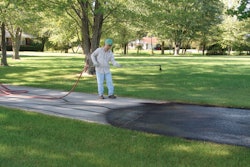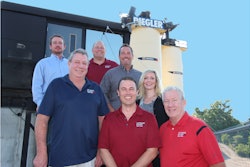At the 2015 National Pavement Expo, be sure to ask a PCTC member for a copy of the new “glove box” booklet. Designed to fit in a vehicle’s glove box, the booklet will help sealcoat contractors talk with customers about their product. Based on the Frequently Asked Questions (FAQ) section at pavementcouncil.org, the booklet contains answers to many of the questions asked most often about pavement sealcoat in easy to understand language. The FAQ page at pavementcouncil.org is being revised to better align with the format of the booklet with links to more information so the web page and booklet can be used together.
For ease of use, the booklet will be divided into short, readily identifiable topics:
- Why sealcoat?
- What is sealcoating?
- Is sealer a health hazard?
- Does sealer hurt the environment?
- Where to go for more information/about PCTC.
PCTC vs. USGS
In July 2014, PCTC filed a complaint against the U.S. Geological Survey in Federal Court in Washington, D.C. During the course of the litigation, the USGS identified over 1000 documents that it claimed were exempt from disclosure. Many of the withheld documents appear to contain data, including unpublished results of sampling and statistical analysis. PCTC believes that most of the documents were improperly withheld. Its complaint demands that the improperly withheld documents be released. The attorneys for both sides are negotiating a schedule and a protocol for how documents will be reviewed and produced.
FOIA Response
The USGS withheld many documents, but also provided much material in their response to PCTC’s FOIA request. It took almost a year, but indexing the documents received through the FOIA is now complete. During the coming months, expect to see articles based on what is revealed in those documents such as the one recently published at the online magazine, American Thinker.
Sealcoat Science
In PCTC’s continuing efforts to educate ourselves and others about sealcoat in the environment, 2014 was a productive year. PCTC’s science consultants published two stand-alone papers in peer reviewed journals, and also published more evaluations of sealcoat studies conducted by the USGS, the Minnesota Pollution Control Agency and Missouri State University.
Setbacks
2014 also saw a setback in the form of a ban passed by Village of Winnetka, Illinois. Ironically, the Village Council seemed convinced by the least scientifically plausible of any of the arguments made by pro-ban activists. That is, the Village Council seemed most concerned by the possibility of PAHs in water supplies – a possibility that is vanishingly remote. As has so often been the case, most Village Council members had made up their minds long before industry heard about the proposed ban and seemed more interested in finding a drastic solution before they had scientific evidence or data suggesting that there was, in fact, a problem.
2015
Please keep an ear to the ground in your part of the world for any developments PCTC should be aware of. Here’s hoping for happy and productive New Year for everyone.


















